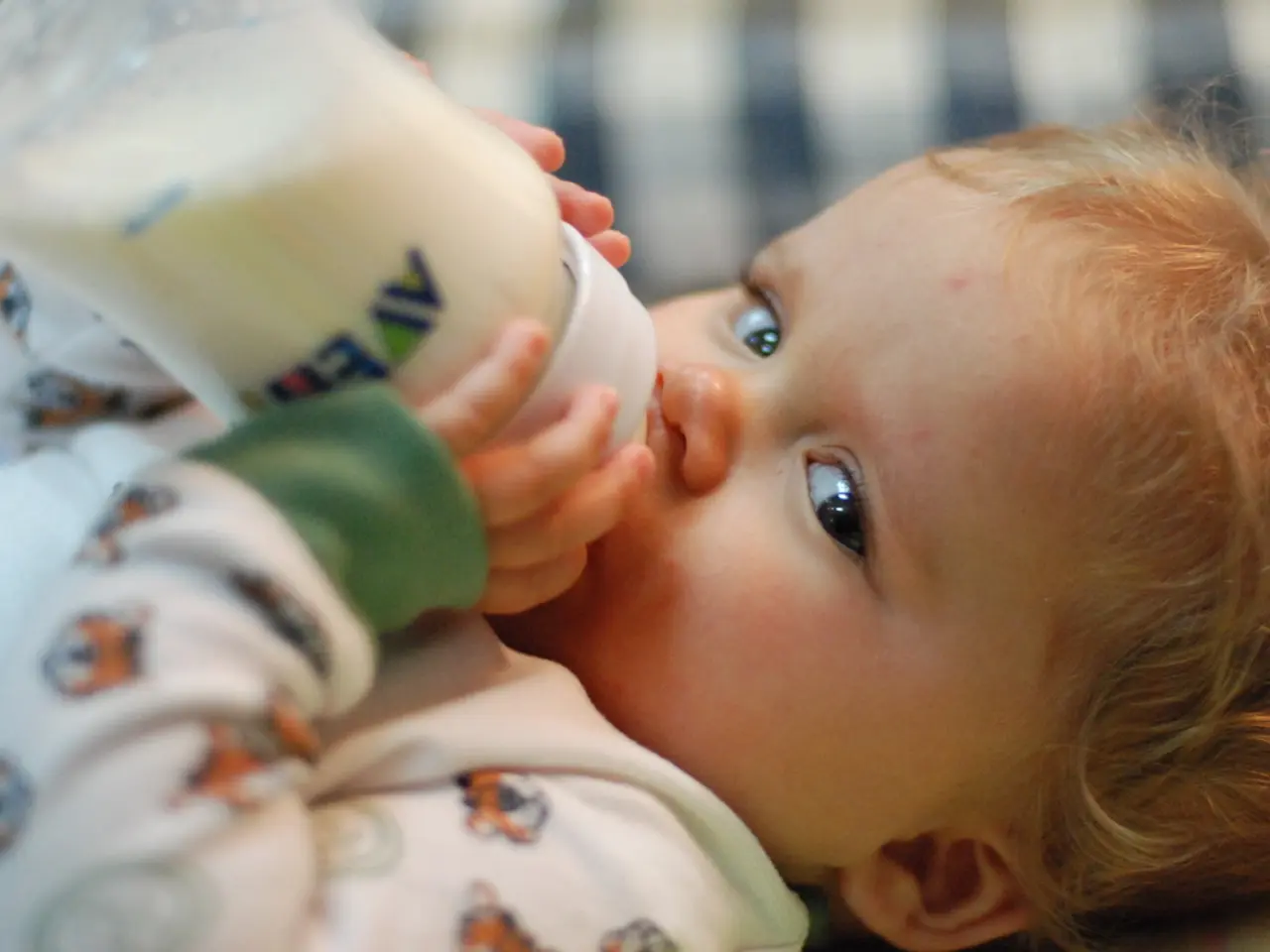Symptoms Not to Overlook in a Child Exhibiting Lactose Intolerance
Lactose intolerance is a common condition in children, characterised by the inability to digest lactose – a sugar found in milk and dairy products – due to a deficiency in the enzyme lactase. This enzyme is crucial for breaking down lactose into simpler sugars, glucose and galactose, for absorption in the small intestine.
The symptoms of lactose intolerance in children can include acute, often frothy diarrhea, abdominal pain and bloating, excessive gas, nappy rash, nausea, irritable behaviour or restlessness, and poor sleep. These symptoms typically appear 30 minutes to 2 hours after consuming milk or dairy products.
It is essential to distinguish lactose intolerance from cow's milk protein allergy. While lactose intolerance is an enzyme deficiency, allergy involves the immune system and can result in more systemic symptoms such as skin rash, hives, swelling, vomiting, diarrhea, eczema, or respiratory symptoms.
Lactose intolerance is a non-threatening disorder with no long-term complications. However, it is important to ensure that children with lactose intolerance still get enough calcium and vitamin D, as dairy is a good source for these nutrients.
Secondary lactose intolerance can develop after an infection that causes irritation of the digestive tract, such as rotavirus or giardiasis. In rare cases, primary lactase deficiency occurs when babies are born with a complete absence of the lactase enzyme, causing severe diarrhea while on breast milk. This is a recessive trait.
Celiac disease, an inflammatory disorder of the bowel, and Crohn's disease, an inflammatory disorder of the bowel, can be associated with temporary lactose intolerance.
Over-the-counter lactase enzyme supplements can help alleviate symptoms for children with lactose intolerance, but may not help if consumed with large amounts of lactose-containing foods. With time, patients may learn how much dairy-based food and drink they can handle.
Lactose intolerance can be diagnosed using a lactose breath test or by strictly eliminating lactose-containing food from the diet for two to four weeks. For more information, Cleveland Clinic suggests reading "Your Practical Guide to Lactose Intolerance".
It is important to note that lactose intolerance affects approximately two-thirds of people after infancy, a condition known as acquired lactose intolerance. Parents may confuse lactose intolerance with milk allergy, but they are different conditions.
In conclusion, understanding lactose intolerance in children is crucial for managing their diet and ensuring their overall health. By being aware of the symptoms and seeking professional help, parents can help their children lead a comfortable, nutritious life despite lactose intolerance.
- Children with lactose intolerance may struggle to absorb necessary nutrients like calcium and vitamin D due to their inability to digest lactose.
- Lactose intolerance can be a health-and-wellness concern for some children, as it can cause symptoms such as diarrhea, abdominal pain, and gas when consuming dairy products.
- Parents should be aware that lactose intolerance can be associated with chronic diseases like celiac disease or Crohn's disease, which can cause temporary lactose intolerance.
- Fitness-and-exercise routines should not be affected by lactose intolerance, but it is important for both parents and children to understand that lactose-rich foods may need to be reduced or avoided, especially during fitness recovery periods, to minimize discomfort.







